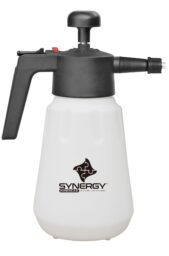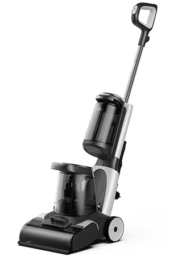Cleaning & deodorizing carpets is simple, safe and easy with Chlorine Dioxide and Envirotab Tablets make it a breeze!
Clean and Eliminate Pet and Other Odors from Carpets & Upholstery with Just a Few Steps.
Cleaning and deodorizing carpets and upholstery can be a challenging task due to several reasons. Firstly, these surfaces often accumulate deep-seated dirt, dust, and stains over time, making their cleaning more time-consuming and labor-intensive. Additionally, the fabric and fibers of carpets and upholstery can be delicate, requiring careful handling and specialized cleaning techniques to avoid damage. Furthermore, the presence of pet dander, food spills, and pet odors can make the cleaning process even more complex, as these odors can be difficult to completely eliminate, requiring thorough deodorization methods. Overall, the combination of deep-seated dirt, delicate fabric, and stubborn odors makes cleaning and deodorizing carpets and upholstery a challenging and meticulous task.
Related: Deodorizing Pet Bedding with ClO2
Many people recognize that odor comes from the activity of bacteria, and they honestly believe that they are doing the right thing to use a quaternary ammonium disinfectant is the answer - 'kill the bugs and destroy the odor' they have been told! What a shame that this is only half of the story, and DEFINITELY the wrong move when trying to clean and deodorize carpets and upholstery.
When quaternary disinfectants are sprayed or applied onto surfaces, the positively charged ions are attracted to negatively charged surfaces, such as countertops, floors, and other materials. As a result, the disinfectant particles adhere to the surfaces, creating a thin, sticky film.
This sticky residue can be attributed to two main factors. Firstly, the positive charge of the QACs enables an electrostatic attraction between the disinfectant and the surface, preventing the complete removal of the product during rinsing or wiping. Secondly, the ingredients in quaternary disinfectants often include surfactants or detergents, which are primarily responsible for facilitating the cleaning process. However, when these components are not effectively rinsed away, they contribute to the stickiness of the residue.
The presence of a sticky residue after using quaternary disinfectants can be problematic. It can provide an ideal environment for the accumulation of dirt, dust, and other pollutants, diminishing the overall cleanliness of the surface. Additionally, it can also act as a breeding ground for bacteria and other microorganisms, counteracting the purpose of the disinfectant.
Related: Chlorine Dioxide Tablets for a Pet-Friendly Cleaning Solutions
We go at carpet cleaning in an entirely opposite fashion.
Cleaning carpets and upholstery is an essential task to maintain a healthy and clean indoor environment. There are several methods and cleaning agents available for this purpose, and one prominent option is using residue-free oxidizers such as chlorine dioxide. Here's why this method is considered superior for cleaning carpets and upholstery.
First and foremost, residue-free oxidizers like chlorine dioxide offer a high level of efficacy in removing various types of stains and odors. Whether it is pet accidents, food spills, or deep-seated dirt, these oxidizers penetrate deep into the fabric's fibers, breaking down and eliminating the stains and odors at their source. As a result, the carpets and upholstery are left not only visibly clean but also free from any residual stains or odors, making them appear fresh and well-maintained.
Moreover, chlorine dioxide is widely recognized as a powerful disinfectant and antimicrobial agent. It effectively kills a wide range of bacteria, viruses, fungi, and other harmful microorganisms that may be present in carpets and upholstery. These microorganisms can cause allergic reactions, respiratory problems, and other health issues. By using residue-free oxidizers that contain chlorine dioxide, not only are the visible dirt and stains removed, but the surfaces are also left sanitized and safe for use.
Another advantage of residue-free oxidizers is their ability to break down organic compounds. These compounds can include oils, greases, proteins, and other substances that are difficult to remove using regular cleaning methods. Residue-free oxidizers, when applied to carpets and upholstery, break down these compounds, making them easier to lift and remove during the cleaning process. This helps to ensure a more thorough and effective cleaning, leaving the surfaces looking and smelling fresh.
Furthermore, residue-free oxidizers are specifically designed to minimize the presence of residues after the cleaning process. Traditional cleaning agents may leave behind residues that attract dirt and contribute to rapid re-soiling. With residue-free oxidizers, this concern is significantly reduced or eliminated altogether. The absence of residues also means that the cleaned carpets and upholstery remain cleaner for longer periods, reducing the frequency of cleaning and extending the lifespan of these surfaces.
Steps for Pre-Treating Dirty & Smelly Carpets Ahead of Cleaning
STEP 1: Create Aqueous ClO2

For carpets or upholstery with mild odors or light soil, use (1) 4g Envirotab Tablets for each gallon of warm water.
For carpets or upholstery with strong odors or heavy soil, use (2) 4g Envirotab Tablets for each gallon of warm water.
STEP 2: Add Soil Break

Once the tablet(s) have dissolved, add (1) oz of Synergy Soil Break for each gallon of water.
Agitate or stir the solution to blend in the detergent additive.
STEP 3: Apply to Carpet

Using a small to medium pump sprayer for applying your blended ClO2 and detergent makes the application much easier than using a trigger sprayer and much more even an application than trying to pour it onto the carpet.
STEP 4: Rinse & Extract

There are many types and sizes of carpet cleaning machines, but with this method, it matters little which type you choose.
Add only clear water to the machine and scrub-extract the now rinsed and clean carpets with water.
Got A Question?
Get it answered by email within minutes during the normal business week, from 6:00 am to 6:00 pm, Monday through Friday, Call Us Mon-Friday from 9:00am-5:00pm EST at 207.299.2164.
Got a Question?
We'll Get Back to You within 24 hours.



